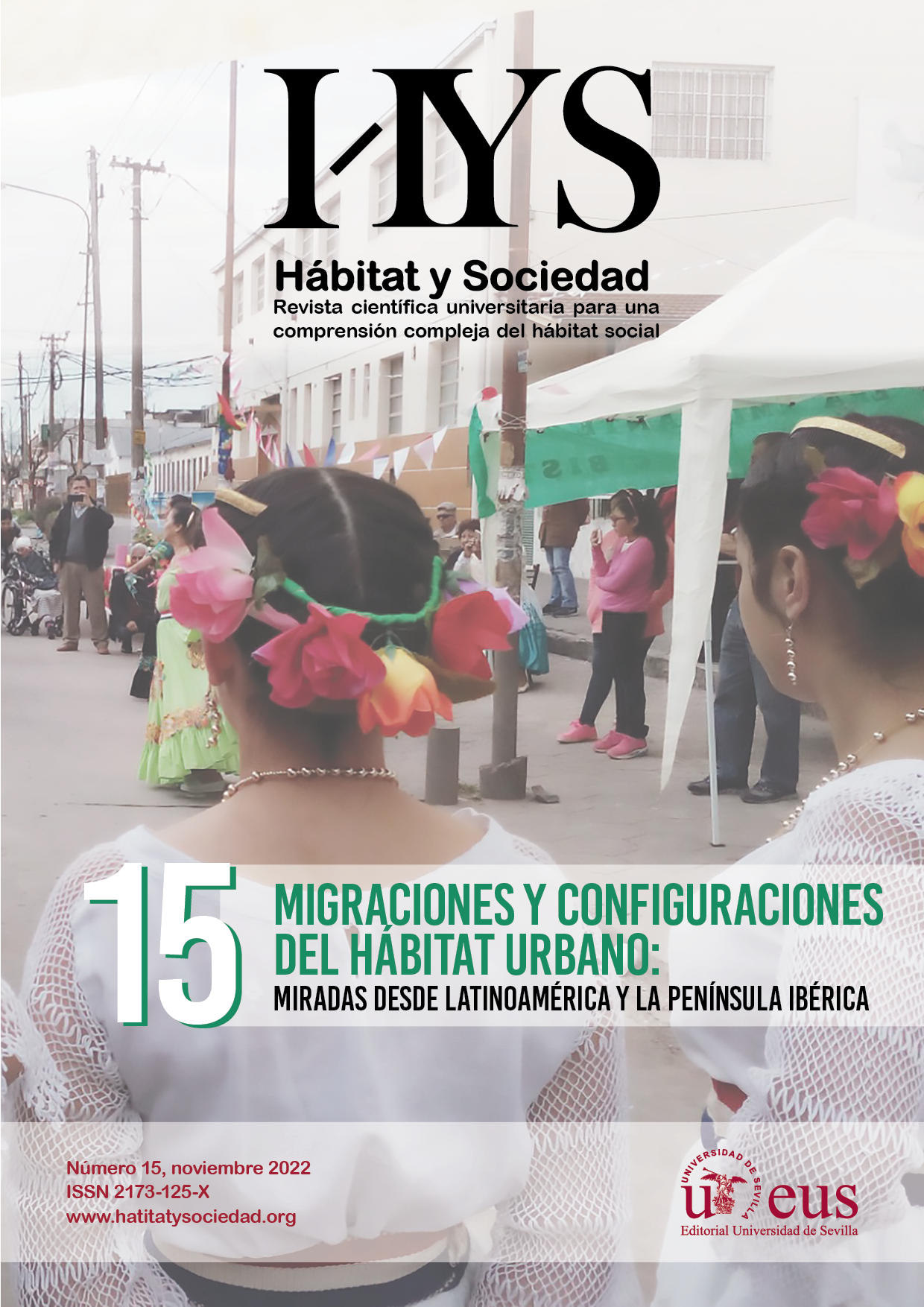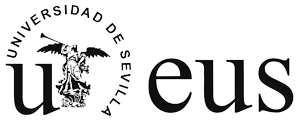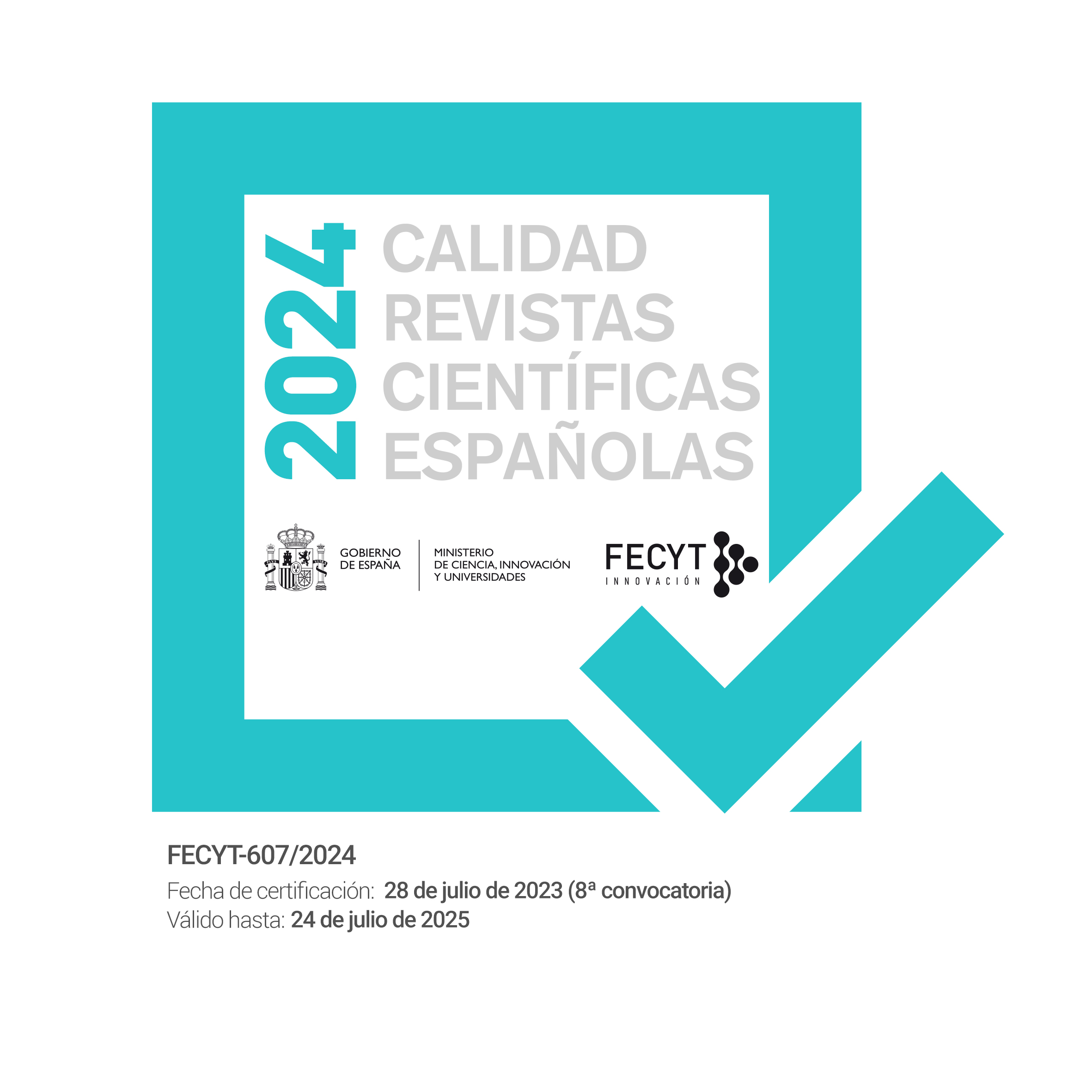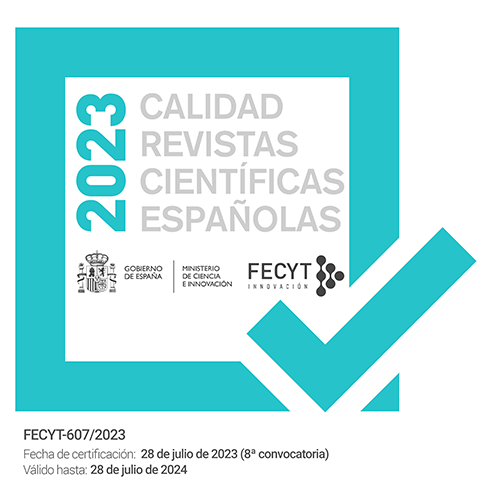A historic challenge: the re-coupling of city and territory as living systems
DOI:
https://doi.org/10.12795/HabitatySociedad.2022.i15.07Keywords:
Habitat, Planning, City, Territory, Livings systemsAbstract
For decades, territorial and urban planning has enjoyed great professional and political acceptance as a desirable practice and great social prestige. The basic conceptual-methodological support is based on the idea that the city and the territory are rational systems that, once their dysfunctions have been diagnosed and their potentialities identified, it is possible to design a preferable state because by applying the appropriate measures the system (city or territory) will evolve along the foreseen path.
However, time and again we observe that reality resists to behave as decided in the planning. In many cases, the directive purpose conditions and orients the evolution of the system, but there is no strict implementation of what is planned in the territory or in the city. This difficulty could be due to insufficient precision and efficiency techniques, but this article argues that the cause lies in the fact that the city and the territory are living systems that follow evolutionary trajectories typical of autopoietic systems and not the behaviours of mechanical systems. Likewise, an organizational scheme typical of living systems is proposed as a conceptual and methodological scheme for planning the city and the territory as living systems.
Downloads
Metrics
References
Benabent, Manuel (2006). La Ordenación del Territorio en España. Evolución del concepto y de su práctica en el siglo XX. Sevilla. Editorial Universidad de Sevilla.
Benabent, Manuel (2019). La insoportable rigidez del Plan General de ordenación urbanística. La necesidad de un nuevo modelo. Ciudad y territorio: estudios territoriales. ISSN 1133- 4762. Nº 201. Madrid.
Berman, Marshall. (2008). Todo lo sólido se desvanece en el aire. Madrid. Ed. Siglo XXI.
Capra, Fritjof. (2006) La trama de la vida. Una nueva perspectiva de los seres vivos. Barcelona. Anagrama.
Cuchí, Albert (2010) Estrategia verde urbana de Santiago de Compostela. Santiago de Compostela. Consorcio de Santiago. http://www.consorciodesantiago.org/es/unaestrategia-verde-para-santiago
Cuchí, Albert et al. (2013). Con los pies en el suelo. Territorio y Sostenibilidad: Diagnosis del metabolismo social de Amorebieta-Etxano. Ayuntamiento de Amorebieta-Etxano.
Ezquiaga, José María (2019). La Nueva Agenda Urbana y la reinvención de la planificación espacial: del paradigma a la práctica. CyTET, 51(202), 765-784. (Ejemplar dedicado a: La Agenda Urbana Española). Recuperado el 2 de abril de 2022 de: https://recyt.fecyt.es/index.php/CyTET/article/view/77735
Fanfani, David y Matarán Ruíz, Alberto (2020). Introduction to Bioregional Planning. Relocalizing Cities and Communities for a Post-oil Civilization. En Fanfani, David y Matarán Ruíz, Alberto (Eds.), Bioregional Planning and Design: Volume I. Perspectives on a Transitional Century (pp. 1-16). Berlin: Springer. DOI: 10.1007/978-3-030-45870-6_1
Fariña, José (2015). Cambiar el modelo urbano. Ciudades, 18, 69-79. DOI: https://doi.org/10.24197/ciudades.18.2015.69-79
Fernández, Gustavo, (2010). Heráclito, naturaleza y complejidad. Madrid: Plaza y Valdés.
Forman, Richard TT y Godron, Michael (1986). Landscape Ecology. Nueva Jersey: John Wiley & Sons Inc.
Forman, R. T. T. (2019). Towns, Ecology, and the Land. Cambridge: Cambridge University Press.
García García, Miriam (2017) Hacia la metamorfosis sintética de la costa diseñando paisajes resilientes. (Tesis doctoral). Universidad Politécnica de Madrid, Madrid, España. https://dialnet.unirioja.es/servlet/tesis?codigo=190940
Górgolas, Pedro (2021). Urbanismo transformacional y Plan General Estructural; reflexiones para un debate disciplinar. CyTET, 53(208), 311–330. DOI: https://doi.org/10.37230/CyTET.2021.208.02
Kauffman, Stuart. (2021) Mas allá de las leyes físicas. Barcelona: Tusquets
Han, Byung-Chul (2017). La salvación de lo bello. Barcelona: Herder.
Gunderson, Lance y Holling C.S. (2003) Panarchy. Understanding Transformations in Human and Natural Systems. Washington D.C.: Island Press
Luhman, Niklas (1997) Organización y decisión. autopoiesis y entendimiento comunicativo. Barcelona: Anthropos.
Magnaghi, Alberto (2006). Scenari Strategici Visioni identitorae per il progetto di territorio. Firenze: Alinea
McHarg, Ian (2000). Proyectar con la naturaleza. Barcelona: Editorial Gustavo Gili.
Mata, Rafael y Ferrer, Daniel (2021). La protección, gestión y mejora del paisaje en España. Ciudad y territorio: Estudios territoriales, ISSN 1133-4762, Nº 207, 2021, págs. 189-214. https://dialnet.unirioja.es/servlet/articulo?codigo=8012929
Matarán Ruiz, A., Yacamán Ochoa, C. (2020). Participative Agri-Food Projects in the Urban Bioregion of the Vega of Granada (Spain). In: Fanfani, D., Matarán Ruiz, A. (eds) Bioregional Planning and Design: Volume II. Springer, Cham. https://doi.org/10.1007/978-3-030-46083-9_6
Maturana, Humberto y Varela, Francisco (1973). De máquinas y seres vivos. Buenos Aires: Lumen.
Maturana, Humberto. (2005) Del ser al hacer. Los orígenes de la biología del conocer. Santiago: JC Sáez Editor.
Morin, Edgar (2009). Introducción al pensamiento complejo. Barcelona. Gedisa.
Naredo, José Manuel (2015). La economía en evolución. Madrid: Siglo XXI.
Naredo, José Manuel (2022). La crítica agotada. Madrid: Siglo XXI.
Prats, Fernando y Ozcariz, Jorge (2017). La biorregión de Álava Central. Una respuesta al cambio global desde la conciliación de las comunidades humanas con sus entornos territoriales. Vitoria-Gasteiz: Centro de Estudios Ambientales.
Popper, Karl (1977). Búsqueda sin término. Madrid: Tecnos.
Requejo Liberal, Juan (2012). Energía renovable: un nuevo principio de autosuficiencia conectada. CyTET, 44(171), 113-126. Recuperado el 2 de abril de 2022 de: https://recyt.fecyt.es/index.php/CyTET/article/view/76112
Requejo Liberal, Juan (2019). Sevilla un sistema vivo que necesita reacoplar ciudad y territorio. Astrágalo 26, 65-86. DOI: https://dx.doi.org/10.12795/astragalo.2019.i26.04
Requejo Liberal, Juan (2020). Towards Connected Self-Sufficiency: Relocalisation of Energy Flow. In: Fanfani, D., Matarán Ruiz, A. (eds) Bioregional Planning and Design: Volume II. Springer, Cham. https://doi.org/10.1007/978-3-030-46083-9_2
Ruiz de Azúa, Carlos (1964). El impulso y su freno. Montevideo: Banda Oriental.
Ferrer-Bonet, María Laura y Ruiz Trillo, Iñaki (2018). ¿Con quién compartimos el planeta?. Investigación y ciencia, 507, 56-62.
Smil, Vaclav (2018). Energía y civilización: una historia. Barcelona: Arpa
Spinoza, Baruch (1998). Ética demostrada según el orden geométrico. Madrid: Orbis.
Published
How to Cite
Issue
Section
License
Copyright (c) 2022 Juan Requejo Liberal

This work is licensed under a Creative Commons Attribution-NonCommercial-NoDerivatives 4.0 International License.
Los autores/as que publiquen en esta revista aceptan las siguientes condiciones:
1. Los autores/as conservan los derechos de autor y ceden a la revista el derecho de la primera publicación, con el trabajo registrado con la licencia de atribución de Creative Commons, que permite a terceros utilizar lo publicado siempre que mencionen la autoría del trabajo y a la primera publicación en esta revista.
2. Los autores/as pueden realizar otros acuerdos contractuales independientes y adicionales para la distribución no exclusiva de la versión del artículo publicado en esta revista (p. ej., incluirlo en un repositorio institucional o publicarlo en un libro) siempre que indiquen claramente que el trabajo se publicó por primera vez en esta revista.
3. Se permite y recomienda a los autores/as a publicar su trabajo en Internet (por ejemplo en páginas institucionales o personales) antes y durante el proceso de revisión y publicación, ya que puede conducir a intercambios productivos y a una mayor y más rápida difusión del trabajo publicado (vea The Effect of Open Access).
Accepted 2022-07-18
Published 2022-11-28
- Abstract 693
- PDF (Español (España)) 1100
- HTML (Español (España)) 107













